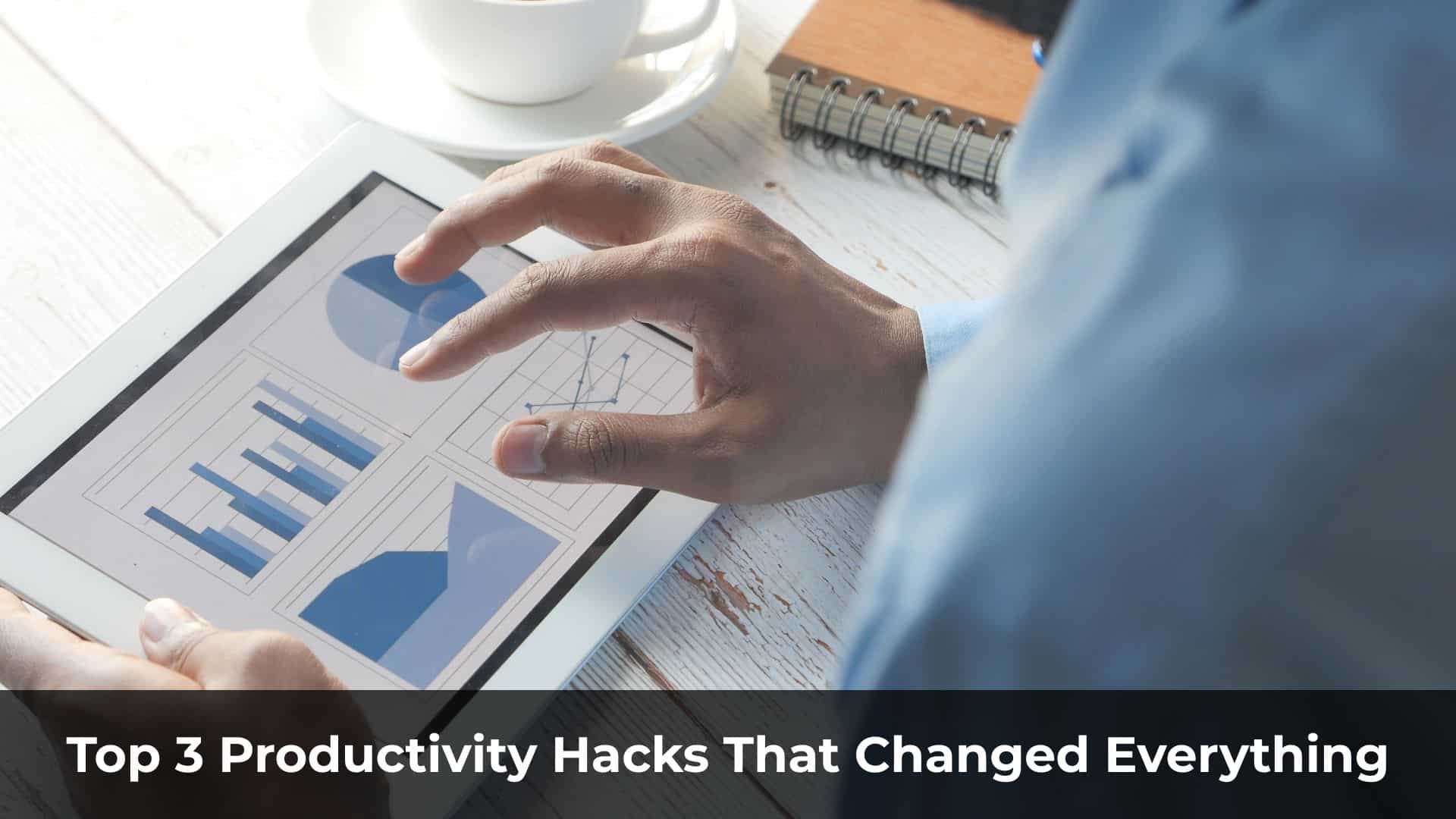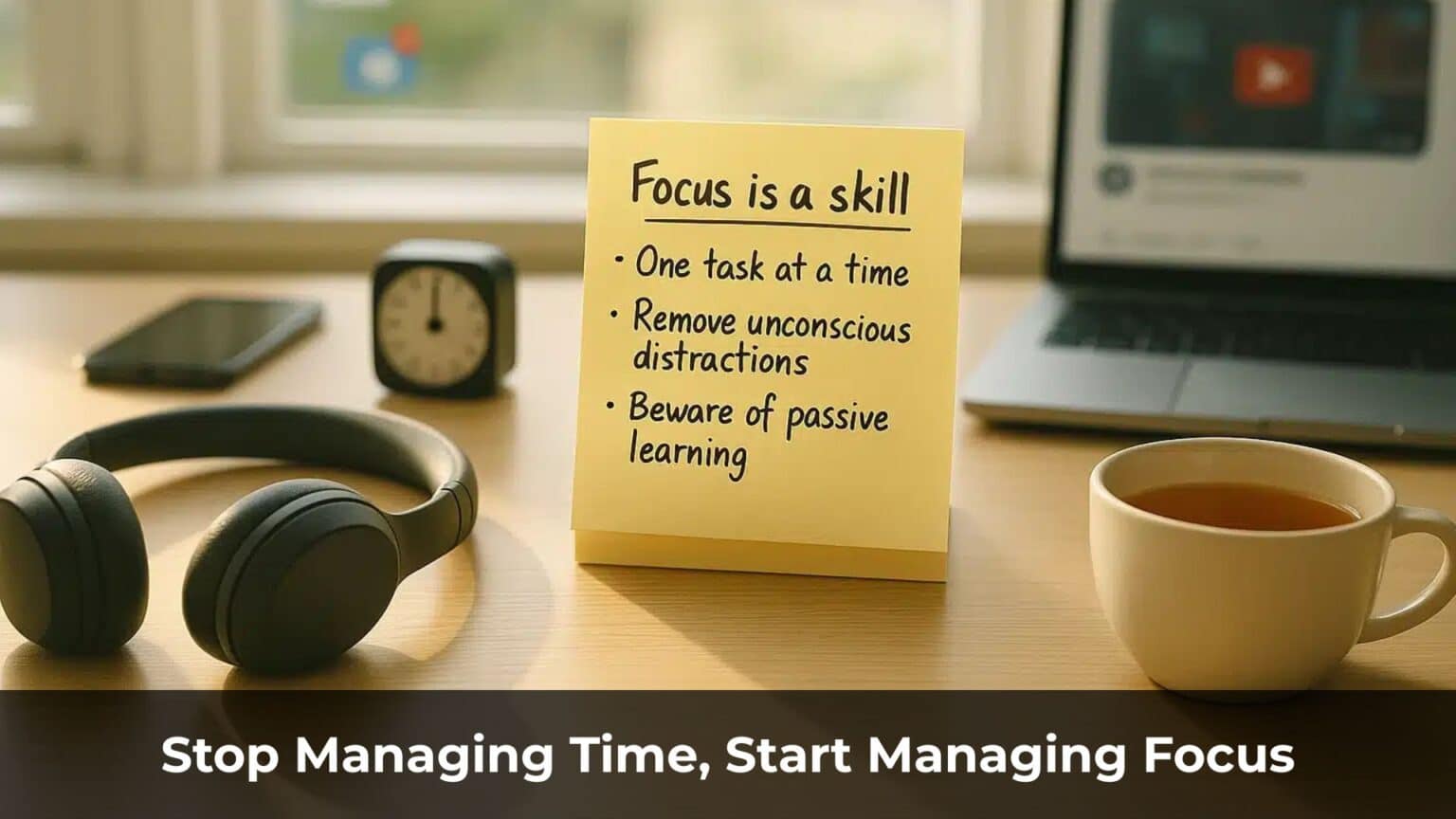If you’ve been following my blog for a while, you probably know I’m obsessed with productivity.
A while back, I had a realization: we only get 24 hours in a day. And I didn’t want to wait until retirement to start enjoying life—I wanted to enjoy it now.
Over time, I’ve shared basic strategies like using Pomodoros, planning your day, and blocking distractions.
But in this post, I want to show you the most powerful hacks I’ve discovered this year.
These are new techniques I’ve started using recently—and they’ve made a massive difference.
I’m only sharing three. Any more might be overwhelming.
Use them, and you’ll start making serious progress.
Table of Contents
ToggleFix All the “Little Annoyances” with a Problem List
Let’s say you’re building a piece of software.
One of your jobs is to identify and fix those annoying little bugs—the ones that make your app behave in unexpected ways.
If it keeps freezing, that’s a bug. You’ve got to fix it before users start complaining.
A few months ago, I realized my life felt like buggy software—full of small, persistent glitches.
Think about it. You design your life to work a certain way, but it rarely runs as smoothly as you hope.
I wanted to sleep peacefully every night. But sometimes, the sound of honking cars would wake me up.
That’s a problem. That’s a “bug” in the life software.
You can either fix it or let it keep bothering you. (In my case, I bought a white noise machine to drown out the honking.)
Now, you probably already have a to-do list or maybe a list of ideas.
But here’s the thing: not everything on those lists is actually worth doing.
Are those tasks solving real problems? Or are they just busywork?
Human instinct tends to favor the fun, easy stuff.
For example:
- You want to revamp your company website? Cool. Everyone loves a fresh, modern design.
- But what problem are you solving? Are customers complaining about it? Or is the real issue something else?
- Maybe the real problem is that your sales aren’t profitable enough.
- Is a new website the only way to fix that? Probably not.
So don’t waste your resources fixing things that aren’t broken.
Start by Listing Out Your Problems
Begin by making a list of all the issues you’re currently facing.
Create two separate lists: one for personal problems and one for work-related problems.
Here’s a quick example:
Personal:
- Smoke alarm isn’t working
- Bedroom AC isn’t cooling properly
- Pantry is a mess and needs organizing
- You keep forgetting to pay rent on time
Work:
- Google keeps flagging your domain
- Product refund rate is as high as 10%
- Landing page translation is inaccurate
- Facebook ad CPC continues to rise
Now you’ve got a clear picture of what needs fixing. But not all problems are equally important.
1. Prioritize Your Problems by Importance
Not all problems deserve your attention right now.
Think of problems like fires. And you’re the firefighter—you don’t go chasing smoke while the house is burning down.
Sure, your dog shedding all over the floor might annoy you. But your roommate not paying rent? That’s a bigger fire.
When your problem list starts growing, it’s easy to get overwhelmed or distracted by the small stuff. That’s why the next step is to sort your list by impact.
Ask yourself:
- What’s causing the most stress?
- What’s costing me money, time, or energy?
- What problem, if solved, would make everything else easier?
Focus on fixing those first. The small stuff can wait.
2. Next, Take Time to Actually Think Through the Solutions
Some problems are straightforward.
If your smoke alarm won’t stop beeping—call maintenance.
Pet hair all over the floor? Get a robot vacuum and run it whenever you leave the room.
But what about the more complex stuff—like a 10% refund rate on your product?
That could be a quality issue. Or maybe you’re overpromising on your landing page. Either way, that’s a serious problem—one that requires actual brainpower. You and your team need to sit down, dig in, and figure out the root cause. Then build a plan to fix it.
Start by clearly defining the issue. Then list out the specific actions you need to take. One by one, check them off until the problem is handled.
Now imagine this: what if all your “life glitches” were gone?
Pretty great, right?
Unfortunately, there’s no genie to grant that wish.
So you’ve got to do it yourself—step by step. Complaining won’t fix anything. Taking action will.
Here’s a fun little way I’ve applied this mindset to how I spend money:
I once decided to take up yoga. So I bought a $20 yoga mat from Amazon.
Later, I started browsing reviews and stumbled upon a $130 “professional-grade” mat.
I wanted it.
But I had just bought one. So I asked myself: What problem would this solve?
The answer? None.
If my current mat ever wears out and actually stops me from doing yoga—that’s when I’ll upgrade.
But buying a second mat right now doesn’t solve any real problem. It just feeds the urge to “upgrade” something that isn’t broken.
3. Track Your Personal Metrics
Most people think pretty highly of themselves.
They tend to overestimate. I’ve done it too.
It wasn’t until a few years ago that I truly learned the importance of self-awareness—being honest with yourself and assessing things as they are, not as you wish them to be.
Because if you can’t be real with yourself, how can you ever improve?
That’s why I love numbers. I might exaggerate how well a campaign is doing—but data doesn’t lie.
Ask someone how much time they spend on Facebook daily, and they’ll probably say, “Not that much.” No one wants to admit they’re glued to their phone all day.
But the average person? Spends nearly an hour a day on Facebook alone.
Ever met a skinny guy who says he “eats a ton” but still can’t gain weight?
That was me at 18.
I thought I was eating a massive amount… until I started tracking calories. Then I realized I wasn’t even close. Seeing the numbers made me finally take real action.
A lot of people want to save money, but don’t want to build a budget.
Why? Deep down, we’re afraid of facing the truth.
But here’s the thing: understanding the truth is the first step toward real progress.
In business, companies track their performance using something called KPIs—Key Performance Indicators.
It’s not enough to measure revenue or profit. Those are outcomes.
You also have to measure the inputs—the activities that drive those results.
From personal goals to marketing campaigns, KPIs tell the real story. I’ve learned firsthand how deeply they impact performance.
Earlier This Year, I Started Using a Weekly Scorecard
I introduced a “weekly scorecard” into my personal life—a system that holds me accountable for the actions I take each week.
Because if you want to reach your goals, you need to identify the weekly actions that actually move you forward.
For example, one of my goals was to win a local martial arts tournament.
So what actions could get me there?
I created a simple system:
→ Attend class 4 times per week
→ Practice mobility and flexibility drills consistently
A lot of people focus on setting goals—but that’s not enough. You also need to focus on the work. On the system that leads to those goals.
Movies and sports often highlight the dramatic moment of victory. Everyone loves that feeling.
But what leads to that big moment?
Habits. Reps. Practice. Thousands of unseen hours.
You don’t win if you don’t train.
That’s why I recommend creating a system to track your effort. Something that keeps you honest.
You can build your own scorecard using Google Sheets or Excel.
Mark red cells when you fall short. Mark green cells when you take action.
It’s a simple habit—but over time, it creates powerful momentum.
Final Thoughts: Small Fixes, Massive Impact
Success isn’t about having a perfect life—it’s about continuously improving the systems that shape your life.
When you fix the small glitches, prioritize real problems, and stay honest with yourself through data, you stop spinning your wheels and start making progress that sticks.
You don’t need to change everything overnight.
Start by identifying your problems. Build systems around your goals. Track your actions. And most importantly—take ownership.
Because the most powerful transformation doesn’t come from motivation—it comes from consistency.
Let that be your edge.













